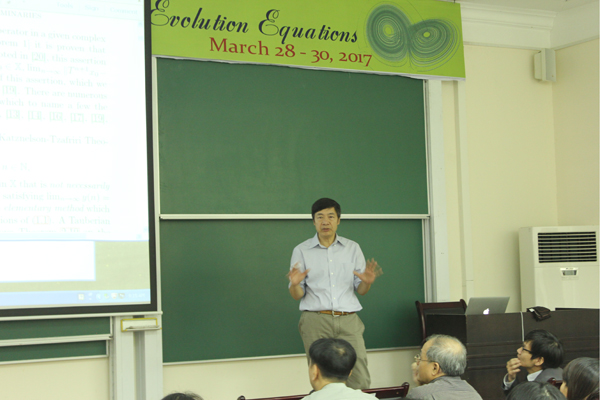Scientific Activities
News
Spring School on "Dynamical Systems and Evolution Equations"
This spring school focuses on some mathematical analysis’ methods for researching of the well-posedness and asymptotic behavior of solutions to evolution equations and dynamical systems.
SEAMS School - Mathematical Modelling in Biology
SEAMS School - Mathematical Modelling in Biology is taking place at VIASM from March 8th to March 15th, 2017. The school aims to provide basic knowledge of Mathematical Modelling in Biology, and to introduce some problems of the subject which are currently in the field of intensive research. The school is addressed to senior undergraduate students, graduate students, PhD students and researchers who are interested in this topic, especially applicants from Southeast Asia.
Học bổng theo học Master CRYPTIS trong chương trình hợp tác giữa Đại học Limoges (Pháp) và VIASM.
Sau khi phối hợp tổ chức thành công một số hoạt đông khoa học như Trường Thu Mật mã và Hội nghị quốc tế ASIACRYPT 2016, Viện Nghiên cứu cao cấp về Toán và Trường Đại học Limoges tiếp tục hợp tác trong việc đào tạo ở trình độ Master (thạc sỹ). Hai bên thống nhất sẽ giành 2 suất học bổng Master 1 và 2 suất học bổng Master 2 cho các sinh viên Việt Nam, cho năm học 2017-2018 và 2018-2019 để theo học chương trình thạc sỹ Master CRYPTIS.
Topology of Singularity
The three days workshop Topology of Singularity has started at VIASM on February 20, 2017. The aim of the workshop is to create a forum for researchers from Japan and Vietnam to exchange methods, new ideas, results, and perspectives in Singularity Theory.
IACR-SEAMS School "Cryptography: Foundations and New Directions"
The autumn school IACR-SEAMS School “Cryptography: Foundations and New Directions” is the first joint school between The International Association of Cryptology Research IACR and The South East Asia Mathematical Society (SEAMS) organized by Vietnam Institute for Advanced Study in Mathematics (VIASM) and University of Science – Vietnam National University Hanoi (VNU-HUS).







